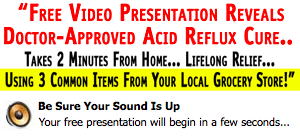March 7, 2011
Signs of Hiatal Hernia
Hiatal hernias occur when a part of the stomach organ relocates to another area. The new area may be within the chest or beside the esophagus. This is allowed to happen when a weak diaphragm opens wider than normal and permits the stomach and lower esophageal sphincter to move upward. There are two kinds of hiatal hernias: sliding and rolling. These types are differentiated based on the location of the stomach.

It is essential that you become aware of the signs of a hiatal hernia. Being able to classify the symptoms will enable you to detect this condition early. Signs of a hiatal hernia often appear to be the same symptoms of gastroesphageal reflux disease (GERD). These symptoms may include burning in the throat or chest, regurgitation, chest pain, sore throat and hoarseness. Pain in the chest and stomach areas are very common ailments associated with a hiatal hernia.
Chest Pain
Chest pain is a major sign of a hiatal hernia. The chest pain experienced can range in level of intensity, but is usually accompanied by heartburn, another sign. This pain is commonly located behind the breastbone but can affect the lower and upper sections of the torso. Chest pain can be confused as a symptom of a heart attack or other cardiac condition. If you encounter numbness in the arms along with shortness of breath, you may be at risk of a heart attack.
Heartburn
Hearburn is a key sign of a hiatal hernia. Heartburn is caused when stomach acid backs up to the esophagus causing irritation and pain. There is increased vulnerability with a hiatal hernia because this condition pushes the stomach and lower esophageal sphincter into the chest and allows acidic fluid to flow backwards through the esophagus. Heartburn pain can be severe and is worsened by lying down. Chest pain, a burning sensation, bitter taste, chronic coughing and difficulty swallowing are just some of the signals of heartburn.
Hiatal Hernia Signs and GERD
The signs of a hiatal hernia strongly resemble the signs of gastroesophageal reflux disease. The signs of these two conditions can sometimes confuse you. Hiatal hernias can contribute to GERD but do not have to be present for GERD to develop. GERD is caused by gradual or sudden changes to the lower espohageal sphincter that fails to stop acid from refluxing into the esophagus.
What You Can Do
If you are experiencing any of these signs, you probably are suffering from a hiatal hernia. To reverse the effects of a hiatal hernia there are a number of treatment options that require lifestyle changes. By eating smaller meals, refraining from eating right before bed and not smoking or drinking a lot of alcohol, you reduce the presence of symptoms. You can also change your diet by limiting fatty foods and foods that are spicy and difficult to digest.
If you seek more information on the causes, signs, symptoms or treatments of a hiatal hernia, visit refluxremedy.com now. There you can get all of your questions answered and move forward with your life.
Filed under Hiatial Hernia by admin





